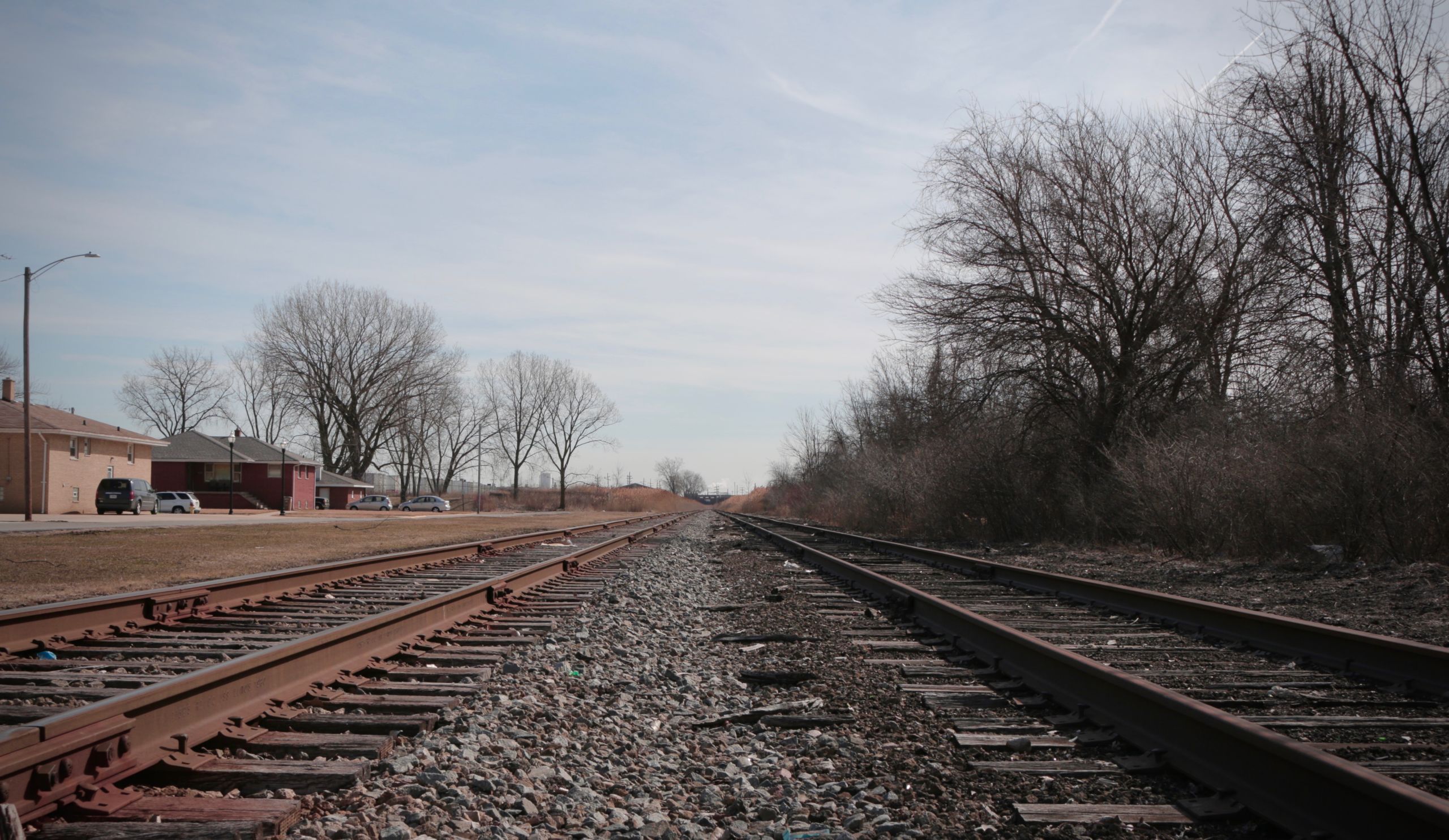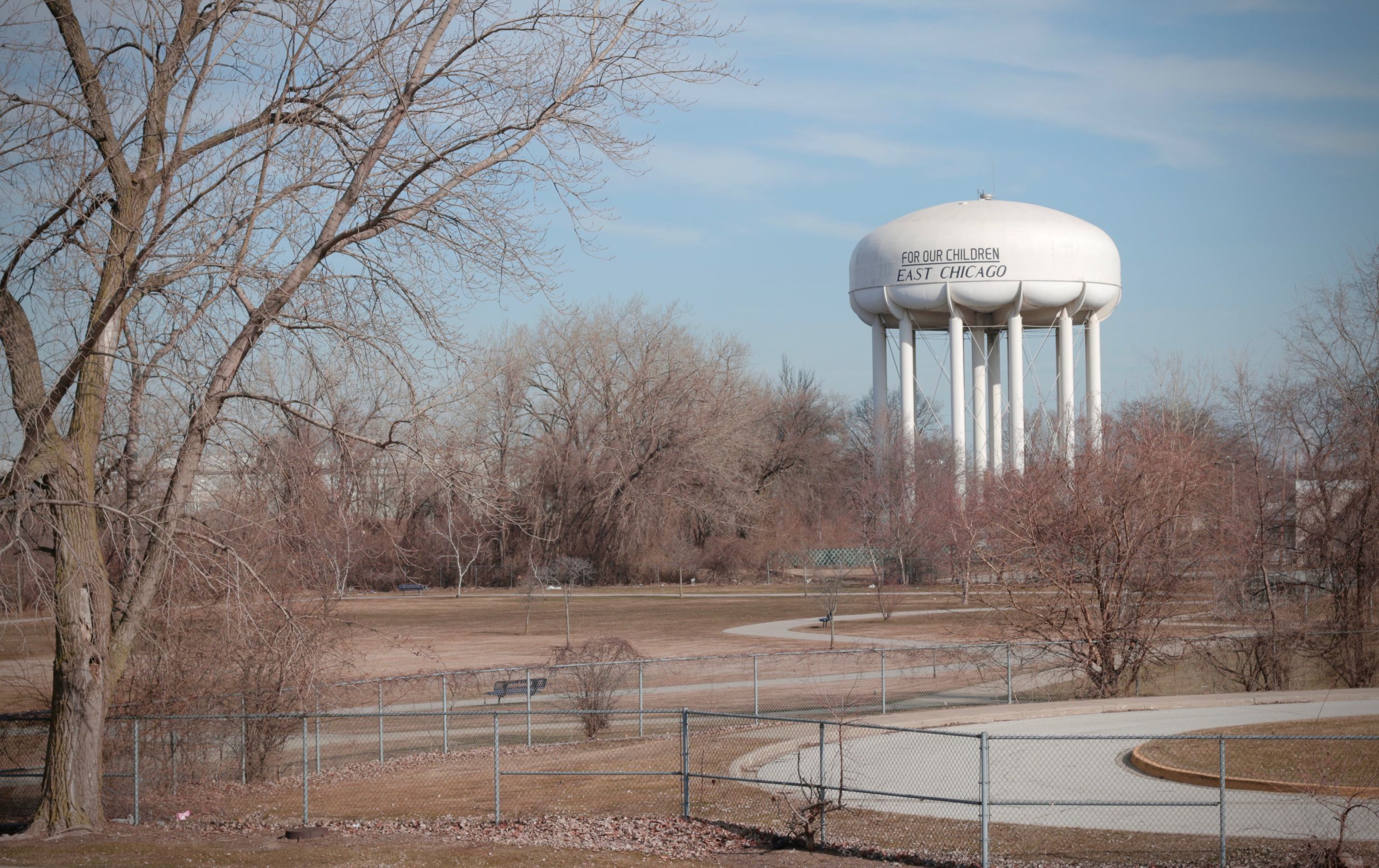How Pollution Seeped Into The Lives Of East Chicago Residents
Five residents share their stories of pollution’s wide-ranging effects — from financial loss, to illness, to loss of community.
Reported by KEVIN STARK | Produced by KATHERINE NAGASAWA | Edited by ALEXANDRA SALOMON
June 17, 2018
For most of the 20th century, East Chicago, Indiana was dominated by industry. Just a 30-minute drive from downtown Chicago and right across the Illinois border, East Chicago even earned the affectionate nickname “Steeltown.” But the chemical plants, oil refineries, lead smelters, and steel mills left a legacy of toxic pollution. For decades, city, state, and federal officials did little about the problem, many residents say.
State and federal agencies first became aware of the public health threat posed by the pollution in the early 1980s. In 1985, the U.S. Environmental Protection Agency (EPA) took samples and determined that the soil was contaminated with lead. Lead can cause all kinds of health problems, particularly in young children. Three neighborhoods were even declared a Superfund site, a designation made by the EPA to allow for clean up of contamination.
But many people in East Chicago say they didn’t understand the full scope of the contamination until 2016, when Mayor Anthony Copeland notified residents at the West Calumet Housing Complex, a public housing development, that it would be demolished and residents would be required to find new homes. The complex had been built on top of a defunct lead smelter, which had polluted the soil with heavy metal slag containing lead. Suddenly, more than 1,000 people were scrambling to find affordable housing. What began as a lead crisis quickly evolved into a housing crisis.
Today, East Chicago, a city of 30,000, is mostly African-American and Latino. The median household income is about $27,000 per year, according to the U.S. Census Bureau. In 2016, residents of the West Calumet neighborhood won a legal settlement that alleged systemic housing discrimination on the part of the East Chicago Housing Authority for locating them in “poor, segregated communities with serious levels of environmental contaminations [sic].” Some residents also argued that the painfully slow cleanup of many areas of East Chicago is an example of further systemic discrimination.
“We call it environmental racism,” says Rev. Cheryl Rivera, a local community organizer. “We've been forced to live in the poisoned area and we are trying to force the city, state, and federal government to start building solutions.”
Curious City received several questions about how pollution has affected people in East Chicago. So we talked with numerous residents from three different neighborhoods about how their homes, their livelihoods, their families, and their health have been impacted by the area’s contamination.
Below are stories from five of the many residents who spoke to Curious City. One woman had to choose between her community and the health of her kids. Another saw his home depreciate in value, and with it, a dream to move to a bigger place. Their stories demonstrate that pollution doesn’t affect everyone in quite the same way and that its effects can be wide ranging — from financial loss, to illness, to loss of community.
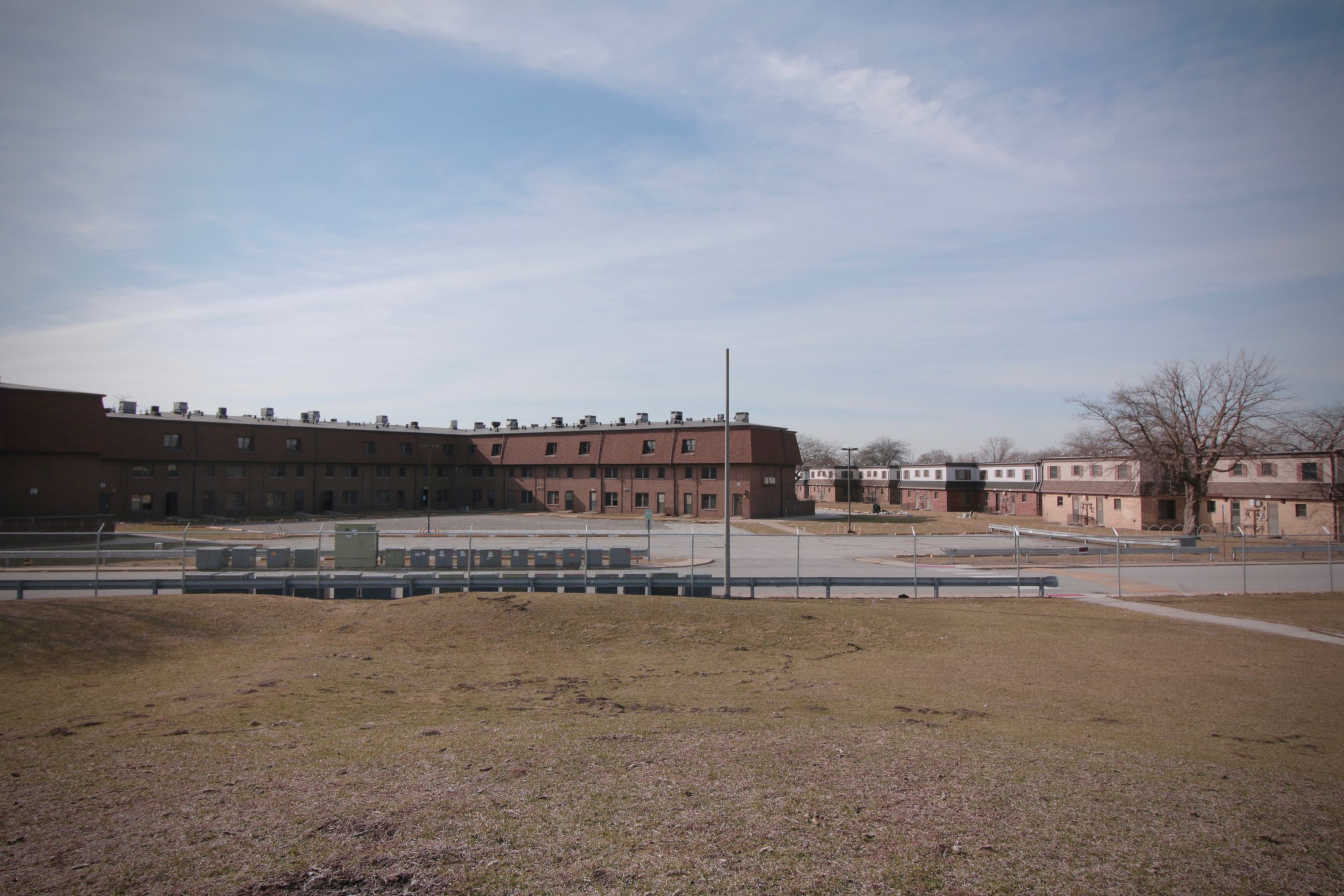
“I was one
pissed parent.”
— Nayesa Walker, former West Calumet resident
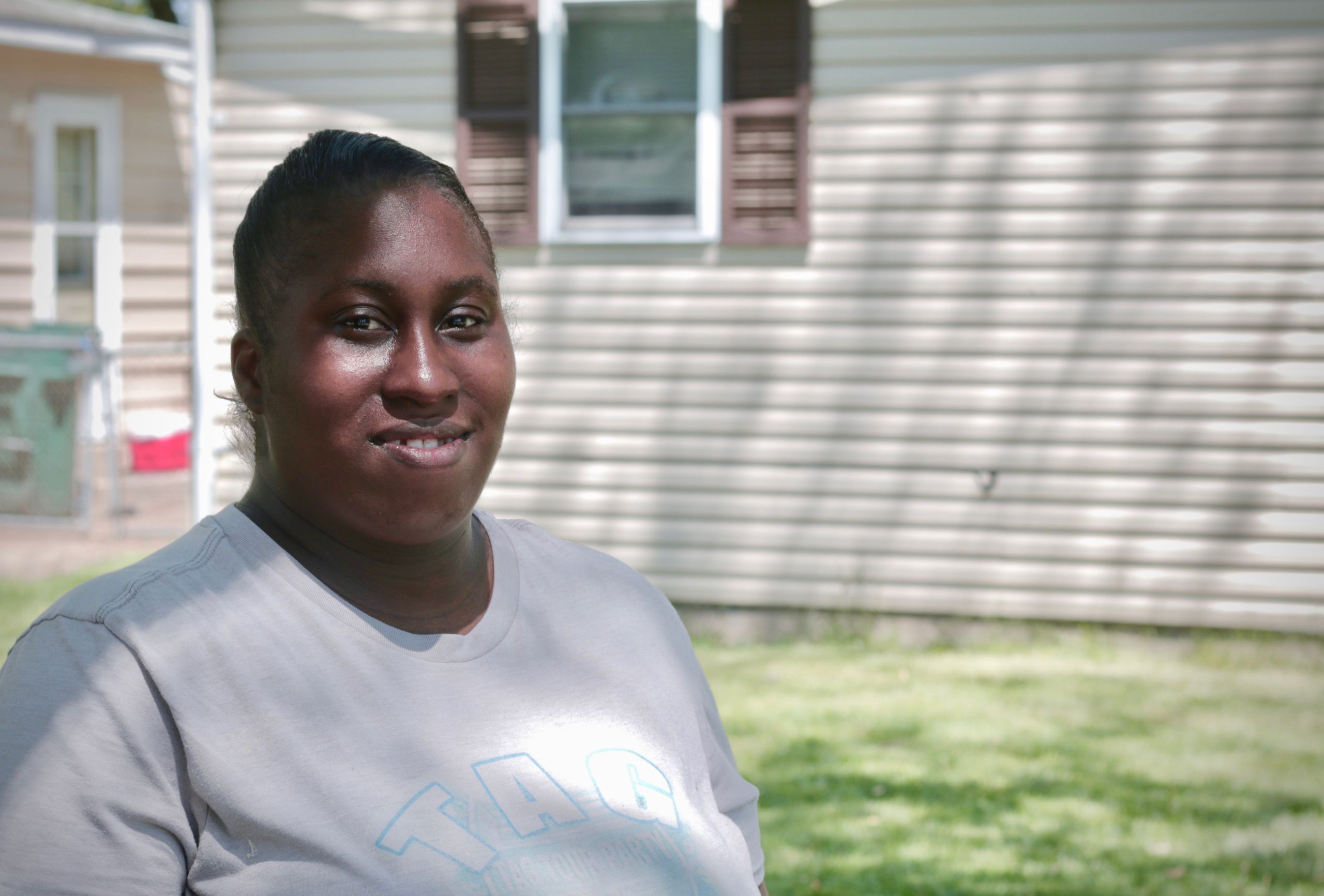
Nayesa Walker says her youngest daughter tested positive for lead exposure at the age of 3.
Nayesa Walker says she had no idea of the dangerous amount of lead pollution in the soil near her apartment in the West Calumet Housing Complex during the first five years she lived there. Not until she received that letter from Mayor Anthony Copeland that detailed the pollution levels and said she needed to move.
Walker, 31, says her first priority has been her children. She learned through blood tests that her youngest child, Kaelynn Lott, who was 3 years old, tested positive for lead exposure. Walker was concerned about how this would affect her daughter’s health.
“I was one pissed parent,” Walker says.
With community and family in West Calumet, Walker had a choice. She didn’t want to leave them — other families were moving to places nearby — but she wasn’t sure it was safe, especially for her daughter, to stay in East Chicago.
“I know for the sake of my kids, I had to move," she says. "I had to think about my kid’s safety. ... There wasn’t anything I could do about it.”
She says she struggled to explain to her kids that they had to move. They wondered why.
“I'm like, it's dangerous,” she says. “They didn't understand it.”
That problem was exacerbated by the fact that affordable housing was hard to find in this industrial part of Northwest Indiana, especially with all 1,100 residents of West Calumet looking to relocate at the same time. Walker eventually found a new home in the nearby city of Hammond.
“I looked at maybe five or six houses before I found this one,” she says, adding that she still misses the community in West Calumet. “It was like one big family.”
For a while, she was considering a move to Nashville to be closer to some relatives. But she worries about uprooting her kids again.
For Walker, pollution has forced her to choose between where she wants to live and the health of her children. She says it’s hard to figure out how to be a good parent given the circumstances.
“I am still debating what I want to do,” Walker says. “My kids have gotten used to the area we are in. I’m taking it day by day.”

Nayesa Walker and her three kids moved to Hammond, Indiana after being forced out of the contaminated West Calumet Housing Complex in East Chicago. (WBEZ/Katherine Nagasawa)
Nayesa Walker and her three kids moved to Hammond, Indiana after being forced out of the contaminated West Calumet Housing Complex in East Chicago. (WBEZ/Katherine Nagasawa)
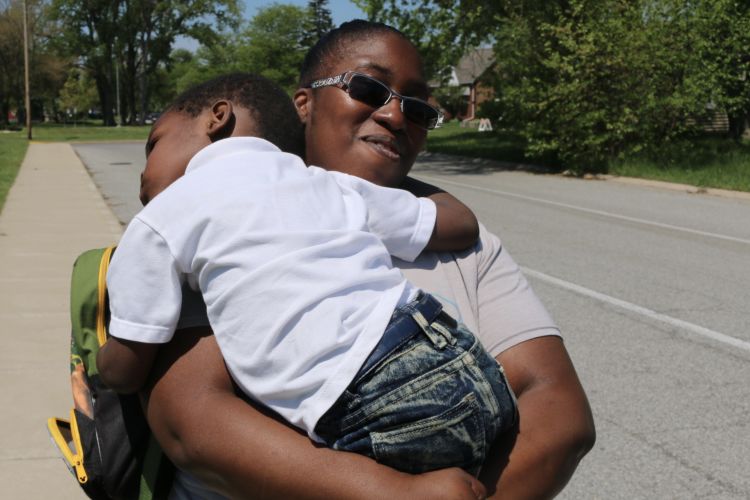
Walker carries her son home from his new preschool. When they first moved, Walker says she told her kids: “‘You have to go to a new school and you'll meet some new friends.’ They said, ‘We don't want to meet new friends; we want our old friends.’" (WBEZ/Katherine Nagasawa)
Walker carries her son home from his new preschool. When they first moved, Walker says she told her kids: “‘You have to go to a new school and you'll meet some new friends.’ They said, ‘We don't want to meet new friends; we want our old friends.’" (WBEZ/Katherine Nagasawa)
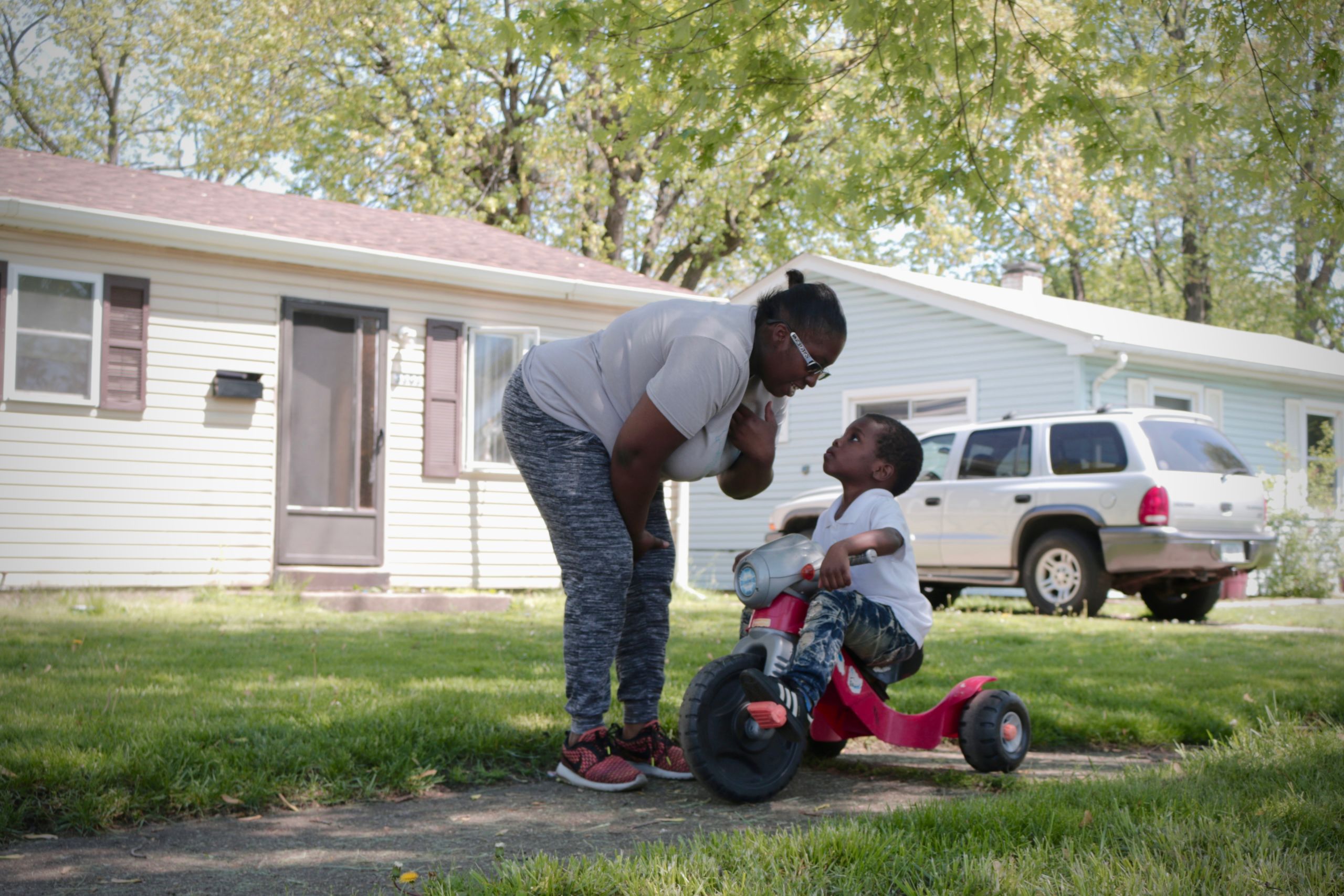

“This is my home.
Who would want to go?”
— Greta Eaton, former West Calumet resident
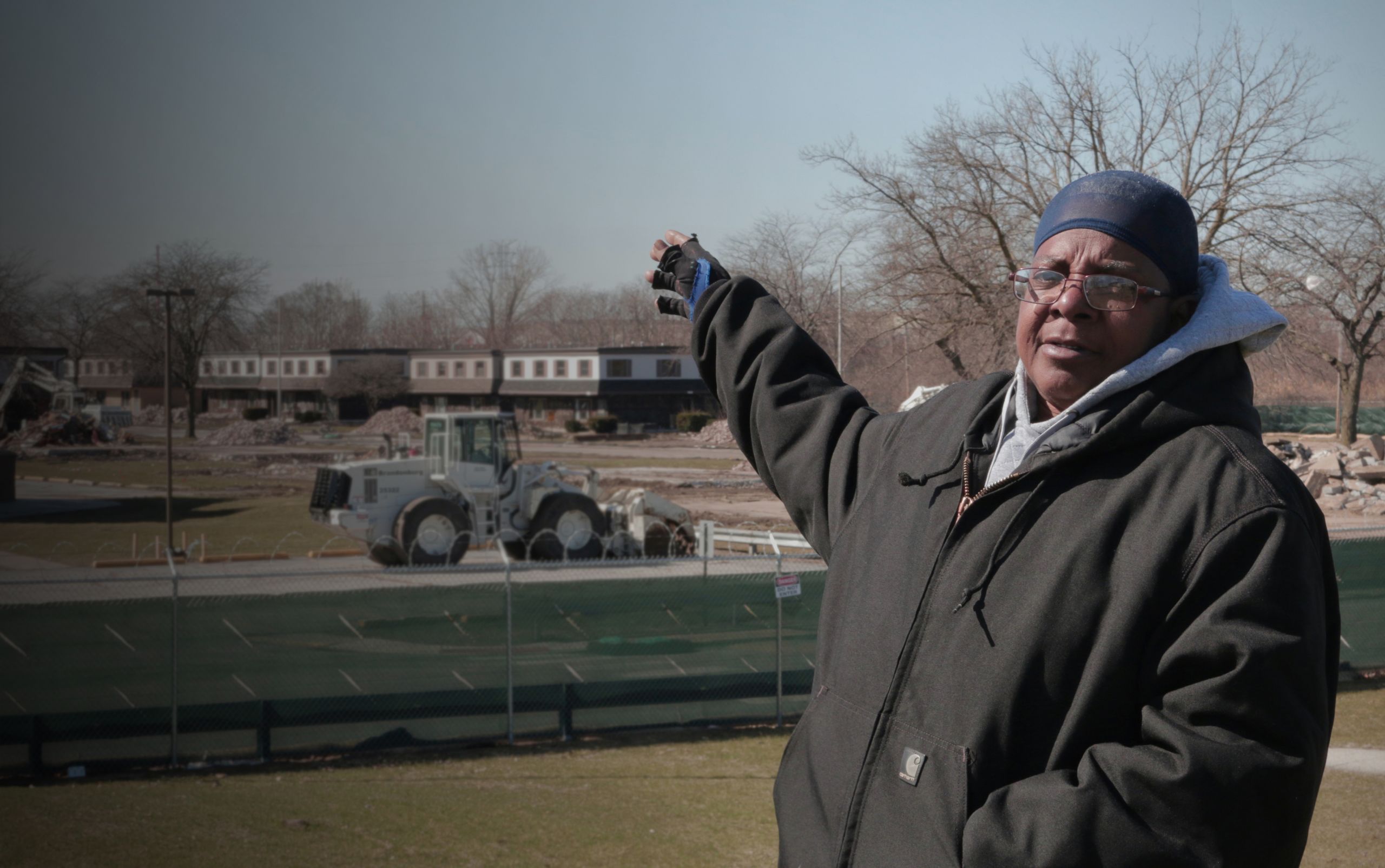
Greta Eaton lived in the West Calumet public housing complex for 24 years, and misses the sense of community she felt there.
Greta Eaton lived on the 4700 block of the West Calumet Housing Complex. “Apartment Y,” she proudly says. Eaton was born and raised in East Chicago, and she moved into the housing complex in 1992. It was her home for 24 years until she was notified — along with other residents — that her building was going to be demolished.
“They suddenly told us we had to go,” she says. “It was kind of sad, man. That was our home. It was a family thing. What we didn’t have, we shared. But if they could put us back in there — I’m ready to go home.”
Eaton is part of a group of residents that, despite the contamination, would have prefered to stay. She says she had built a life there, and the community of West Calumet was very tightly knit.
But with no other choice, Eaton moved away nearly two years ago. She bounced from one apartment to the next before finally settling into a home nearby on Chicago Avenue, a short drive from the housing complex.
Eaton returned to the West Calumet Housing Complex on March 12 to watch the beginning of the demolition, which will continue through August. The entrance is now shuttered and surrounded with a chain link fence. Visible are a few low-rise apartments that are boarded up, others that no longer have doors at all. All of the homes are vacant, except for orphaned appliances and other belongings left by former residents.
“When they tear it down, they should fix it right and let us back in there,” Eaton says.
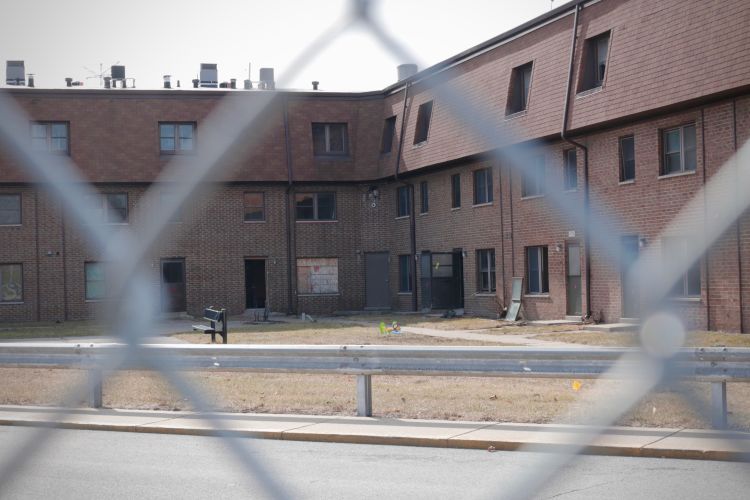
Greta Eaton misses living in the 4700 block of the West Calumet Housing Complex. “This is my home,” she says. “If they’d let us back in, I’m ready to go.” (WBEZ/Katherine Nagasawa)
Greta Eaton misses living in the 4700 block of the West Calumet Housing Complex. “This is my home,” she says. “If they’d let us back in, I’m ready to go.” (WBEZ/Katherine Nagasawa)
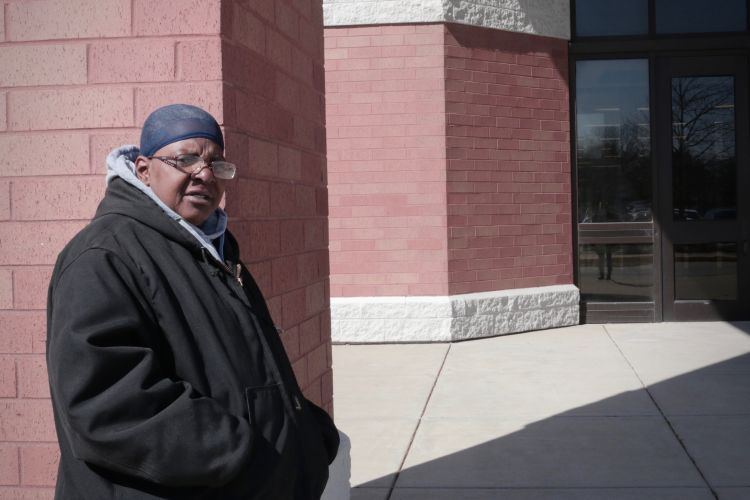
Eaton stands in front of Carrie Gosch Elementary — her former school — located next to the West Calumet Housing Complex. In 2016, about 430 Carrie Gosch students were relocated to a school across town after high levels of lead and arsenic were found in a far corner of the school grounds. (WBEZ/Bashirah Mack)
Eaton stands in front of Carrie Gosch Elementary — her former school — located next to the West Calumet Housing Complex. In 2016, about 430 Carrie Gosch students were relocated to a school across town after high levels of lead and arsenic were found in a far corner of the school grounds. (WBEZ/Bashirah Mack)
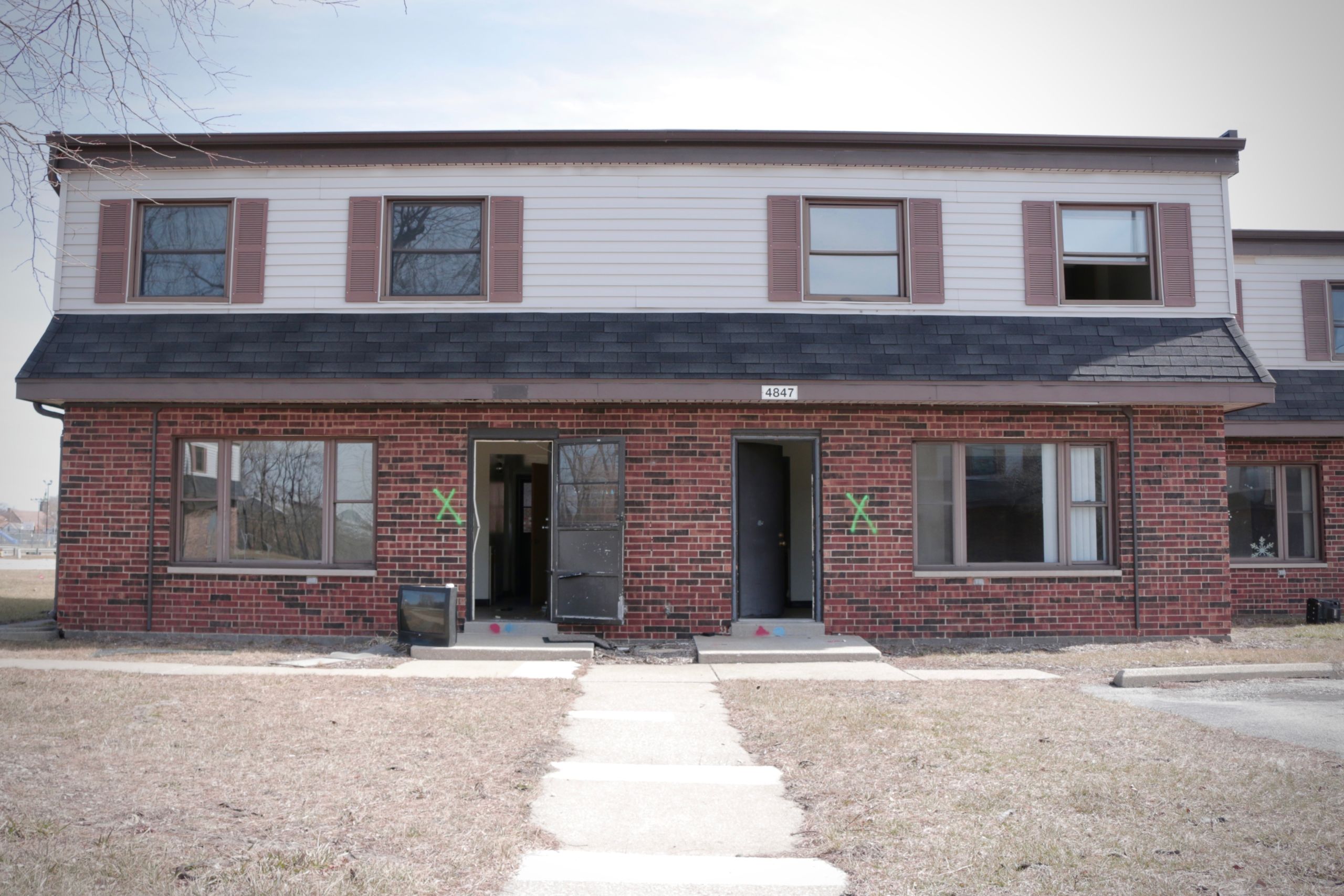
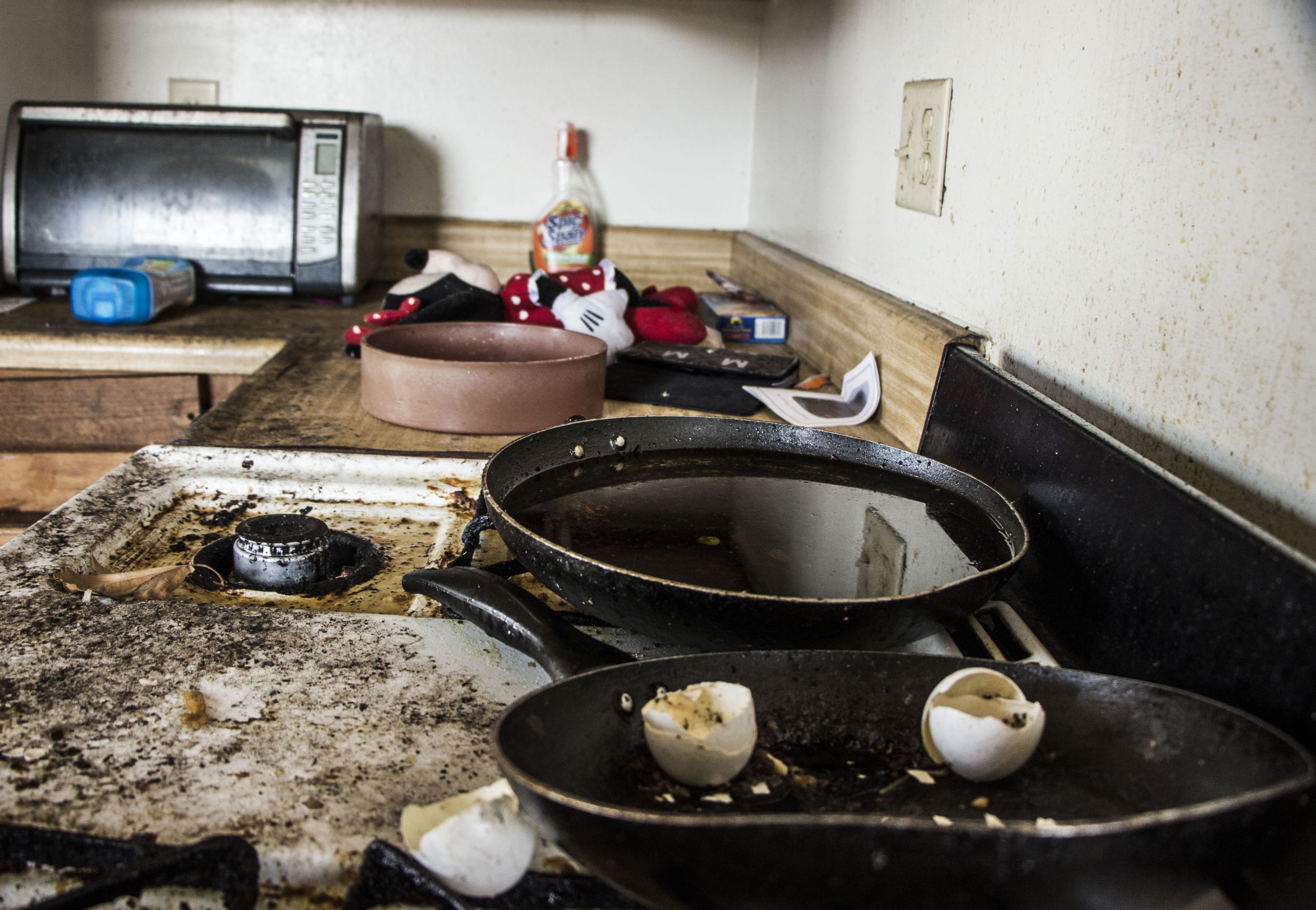
“This was going to
be another starter
home for me.”
— Ezell Foster, East Calumet resident
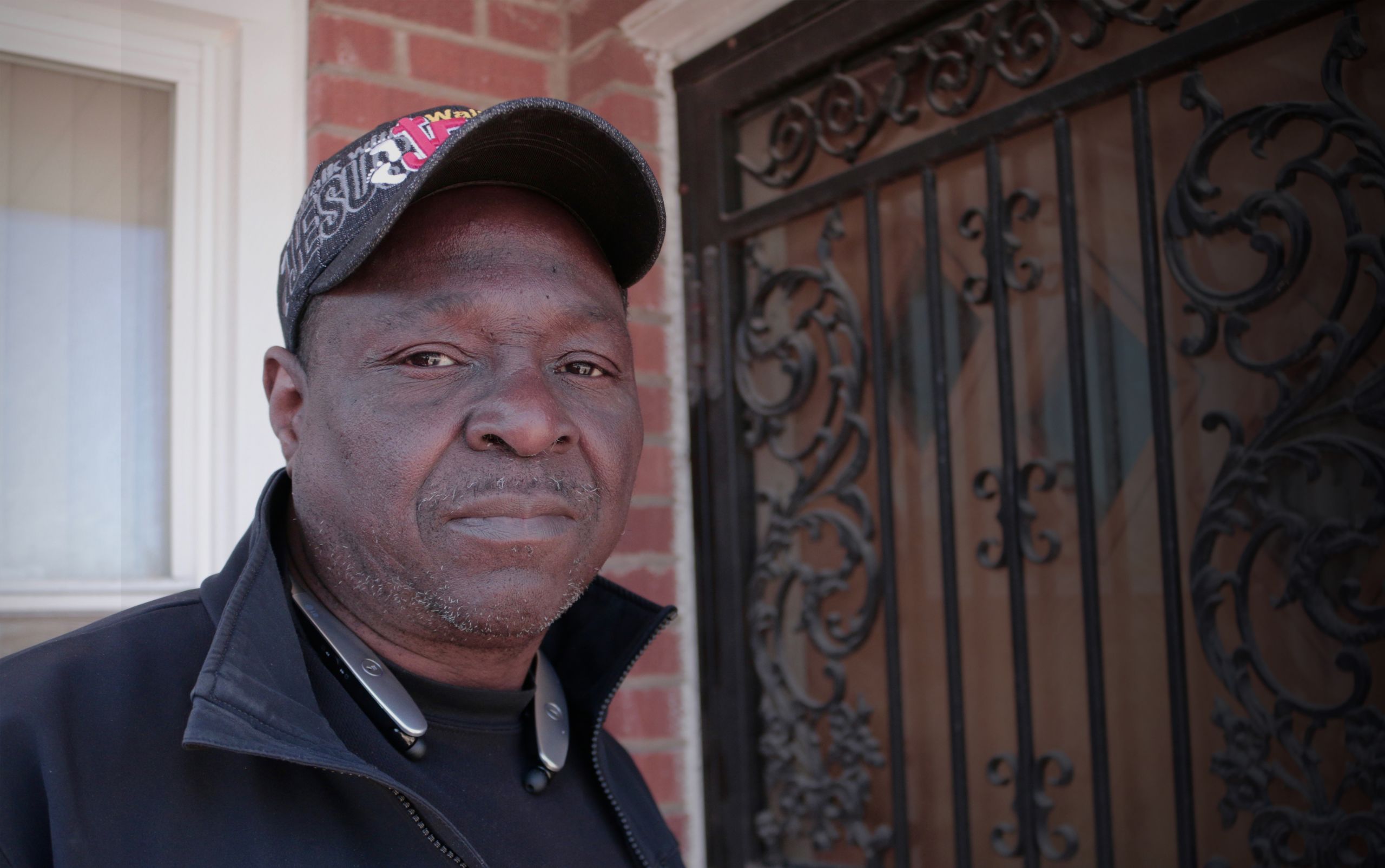
Ezell Foster estimates his East Calumet home value depreciated by $40,000 because of pollution.
Ezell Foster was born and raised in East Chicago. When he bought a house in the East Calumet neighborhood 11 years ago, he did so with the plan to sell it and eventually move to another home.
“I was going to stay here for a while and then I was going to seek a bigger and a better home,” Foster says.
Foster knew the area was industrial, but he says he was not aware of the extent of the pollution until two years ago, when 1,100 people had to evacuate West Calumet, the public housing complex located a short drive away.
While many residents in East Chicago are concerned about the health risks of living near so much pollution, Foster says he is most worried about his home, which he estimates has depreciated in value by $40,000. He had wanted to sell his home and buy a bigger one elsewhere, but he says that goal no longer feels obtainable, at least not for now.
Foster’s story is common amongst Superfund communities, where homes were built near industrial areas. At one time, proximity to smelters and factories was a bonus. Industry provided good jobs and tax revenue, and the houses were there for the workers. Communities like those in East Chicago were formed around a shared identity.
But when the factories around Ezell’s neighborhood closed up, they left behind a toxic footprint. As soil tests revealed the extent of the contamination, home values continued to drop.
Foster says he hasn’t given up on his dream, and he meets every Saturday with a community coalition to organize the ongoing push for a more substantial federal cleanup.
“We've been cumulatively trying to come up with solutions and concerns that we need to address,” he says. “I don't plan to live here for the rest of my life. After I retire, you know, I'm going to check out my options.”
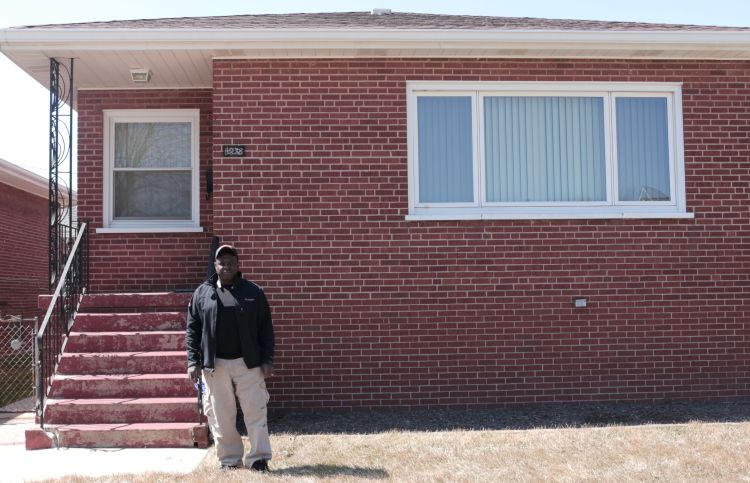
Ezell Foster stands in front of his home in East Calumet. He had wanted to sell his home and buy a bigger one elsewhere, but he says there is a new obstacle to that goal. He estimates the value of his home has dropped $40,000 because of the pollution. (WBEZ/Bashirah Mack)
Ezell Foster stands in front of his home in East Calumet. He had wanted to sell his home and buy a bigger one elsewhere, but he says there is a new obstacle to that goal. He estimates the value of his home has dropped $40,000 because of the pollution. (WBEZ/Bashirah Mack)
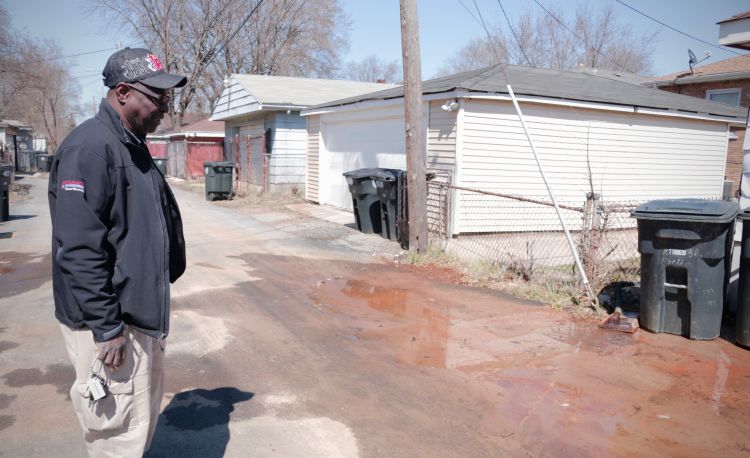
Foster looks at standing water in his alley. He runs a sump pump constantly to keep ground water out of his basement and he’s concerned it could be laced with pollution from local industry. (WBEZ/Bashirah Mack)
Foster looks at standing water in his alley. He runs a sump pump constantly to keep ground water out of his basement and he’s concerned it could be laced with pollution from local industry. (WBEZ/Bashirah Mack)
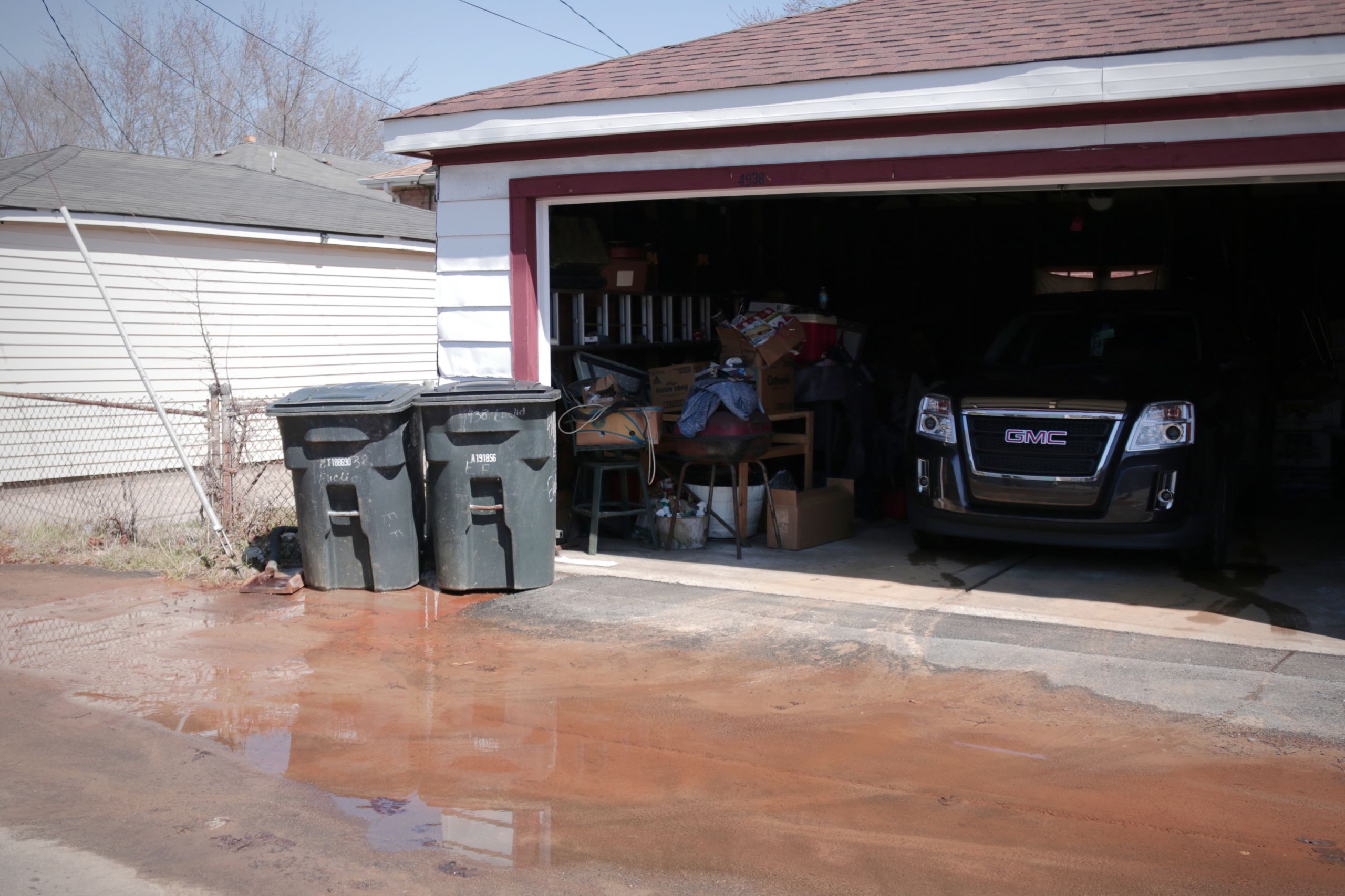
“We have been
so neglected.”
— Sherry Hunter, Calumet resident
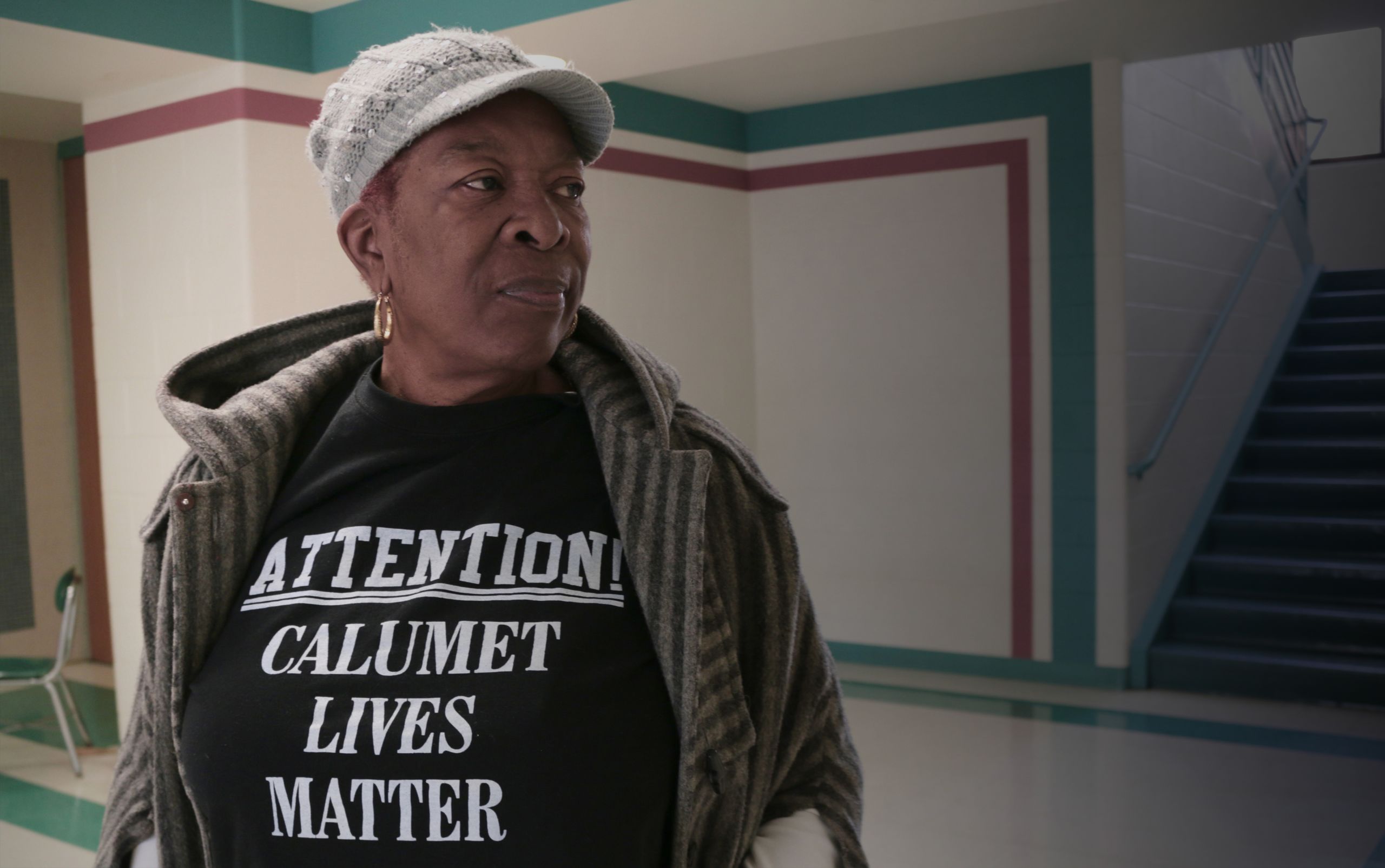
East Chicago community organizer Sherry Hunter says the city needs to invest more in her neighborhood.
Some residents in East Chicago call Sherry Hunter the matriarch of the West Calumet and Calumet neighborhoods. Hunter is an advocate for the local residents, and she’s been at the center of local protests calling for more investment in her community. She wants to see this polluted area redeveloped.
Her picture and story have been featured in newspapers and magazines across the country — she’s a key figure in the Atlantic’s short documentary that asks, “Is East Chicago the next Flint?” (Hunter opens the movie with an impromptu song, and it’s no stretch to see why people gravitate to her).
Hunter runs Calumet Lives Matter, a local group advocating for environmental justice and long-term policies to support the mostly low-income community. The group pushed for first right of return for residents displaced from West Calumet and ongoing health monitoring and Medicare for all residents exposed to pollution. Hunter also organized the distribution of bottled water to families living on the Superfund site.
She says the city of East Chicago has invested in industry and other communities but must now invest more in her neighborhood, Calumet. That means more parks, more businesses, and revitalization for this area that’s been torn apart by pollution.
"Focus on Calumet,” she says. “We are the ones in imminent danger. People are losing their homes, they have been relocated everywhere. The focus should be here, but the city has never focused on this area. We haven't had any help from the city of East Chicago. ... We have been so neglected."
Hunter grew up in East Chicago and has lived down the street from the West Calumet Housing Complex for decades. Many of her friends and family were living in the complex and had to find new homes. When families were moving out of the complex, Hunter pushed for residents to receive more money to cover moving expenses, counseling, and replacement mattresses and furniture. Still, many families said it wasn’t enough.
“I don’t know how we can get attention to what’s going on in this area,” Hunter says.
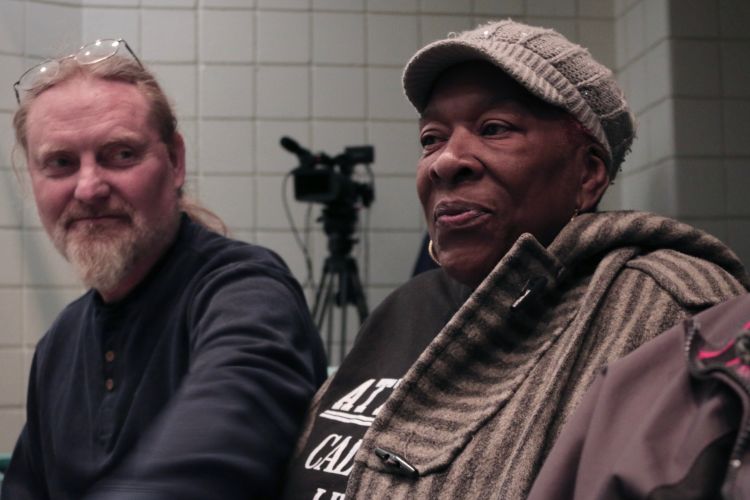
Sherry Hunter attends an EPA meeting in the auditorium of Carrie Gosch Elementary School in East Chicago. Over the past two years, she’s been an advocate for the cleanup and redevelopment of the contaminated areas. (WBEZ/Bashirah Mack)
Sherry Hunter attends an EPA meeting in the auditorium of Carrie Gosch Elementary School in East Chicago. Over the past two years, she’s been an advocate for the cleanup and redevelopment of the contaminated areas. (WBEZ/Bashirah Mack)
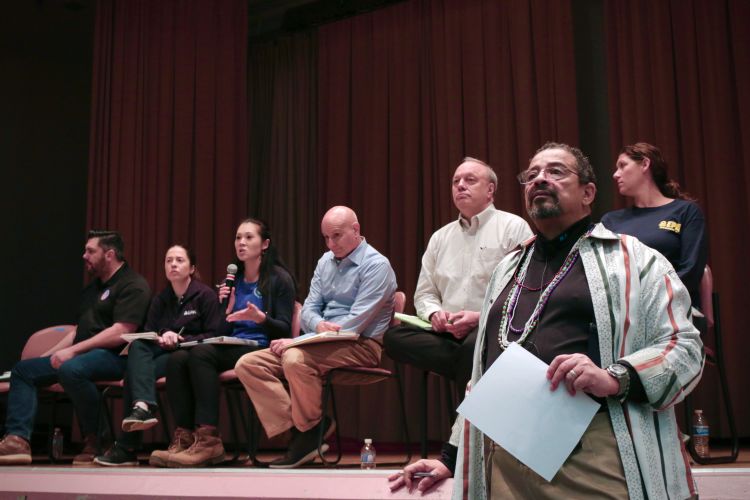
EPA officials answer residents’ questions about upcoming activities at the USS Lead Superfund site in East Chicago. (WBEZ/Bashirah Mack)
EPA officials answer residents’ questions about upcoming activities at the USS Lead Superfund site in East Chicago. (WBEZ/Bashirah Mack)
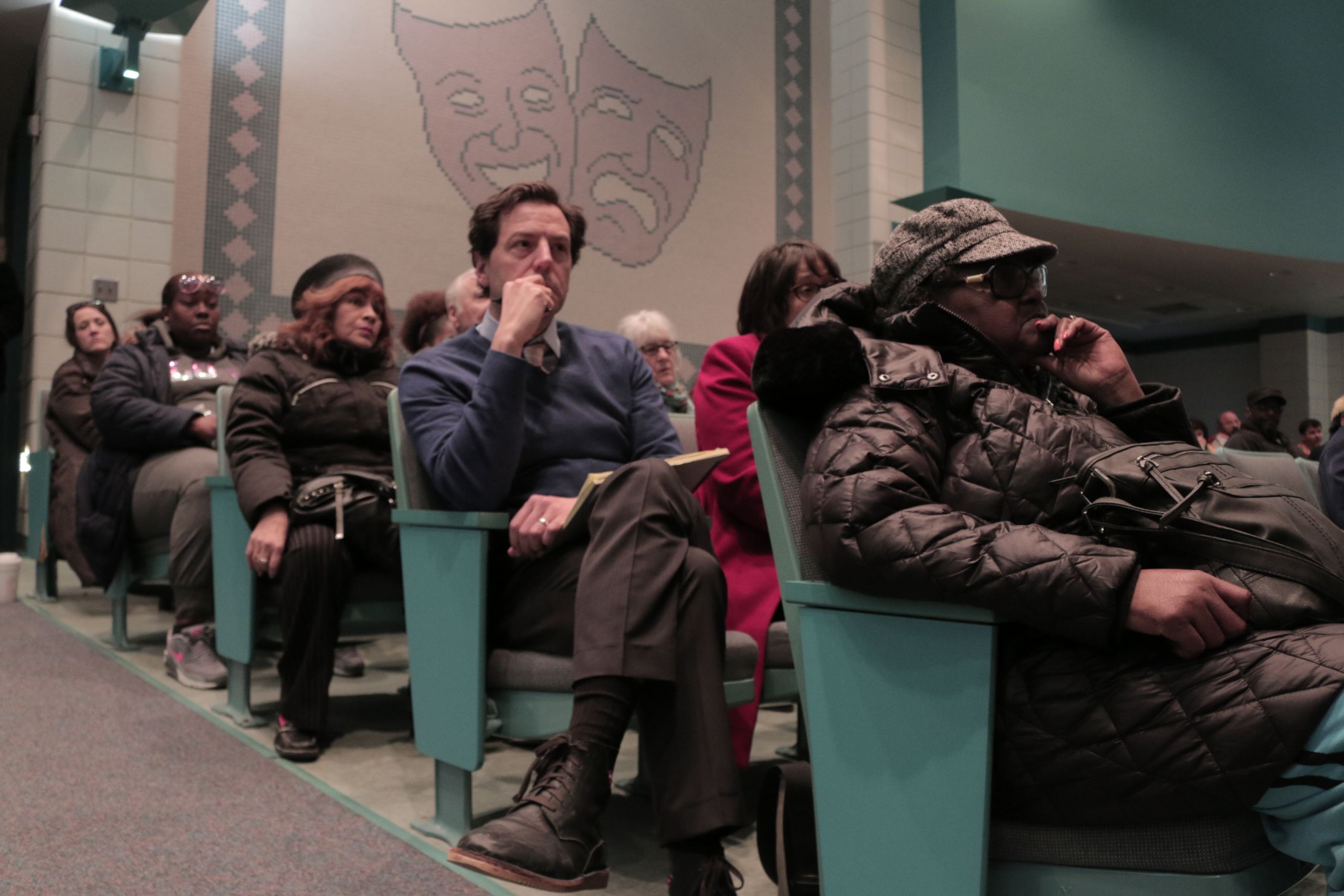
“I know these
contaminants are
what is killing me.”
— Maritza Lopez, East Calumet resident
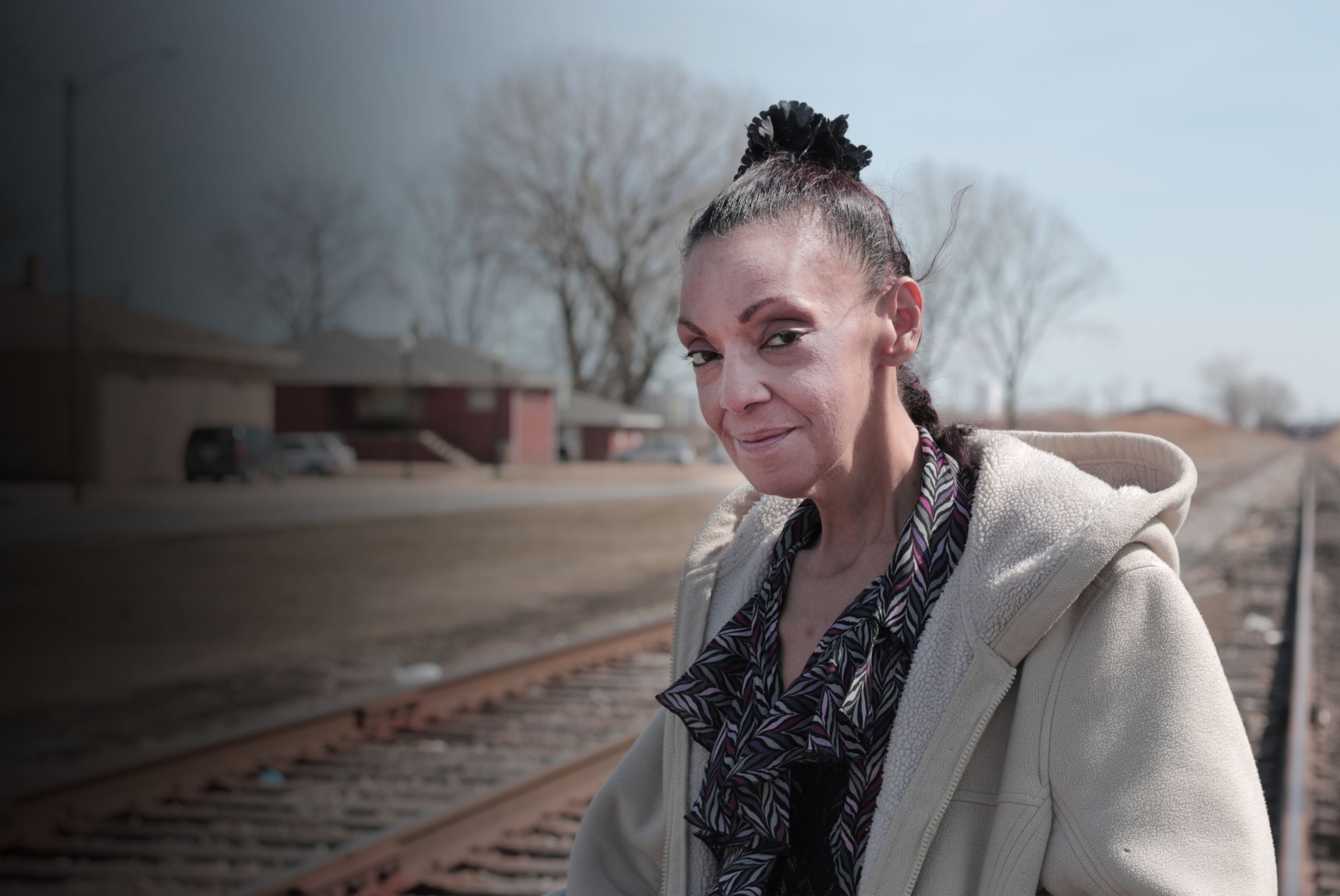
Maritza Lopez, a cancer survivor, says her health problems are the result of decades of exposure to pollution.
Maritza Lopez sits back in a reclining chair and ticks off the ways pollution has hurt her body. She survived cancer and still suffers from seizures and other health problems, which she believes are a result of decades of exposure to heavy metals and other pollution.
“I know these contaminants are what is killing me,” Lopez says. “And I know a lot of my neighbors are going through the same thing.”
The table in her entranceway has more than a dozen orange pill bottles. A silver walker is always within arm’s reach.
Lopez lives in the East Calumet neighborhood in East Chicago. Back in 1994, a study by the Agency for Toxic Substances and Disease Registry declared that contamination from the USS Lead smelter in East Calumet was “a public health hazard.” Blood tests from the area revealed 40 percent of local kids had high levels of lead inside their bodies. From Lopez’s perspective, little was done in the following decades to protect communities living around the USS Lead site.
“I feel that if I don’t speak out, I’m as culpable and as responsible as the companies, as the state, as the EPA for not being on top of it,” she says.
Residents in East Calumet point to the painfully slow government response to the lead crisis in East Chicago as an example of systemic discrimination, and as a lead organizer with East Chicago’s Community Advisory Group, Lopez has been out in front in advocating for residents.
The group is a coalition of residents organized as a community liaison in discussions with the EPA and the industrial companies over cleanup details, community outreach, and ongoing public health assessments. Members have met individually with EPA Administrator Scott Pruitt. They organized independent soil tests, and EPA staff know Lopez by name; they regularly greet her at EPA meetings.
In 2011, the Agency for Toxic Substances and Disease Registry released another health study that said the situation had dramatically improved, but the report used data for the entire city and officials with the agency now disregard it. Mark Johnson, the regional director of the registry, says it “no longer accurately reflects the situation.” A new report is expected this summer.
“Right now, that EPA is in a rush to get things done,” Lopez says. “And it’s not only EPA, it’s the state and the city. You know they've sat on this since 1985. Now that the community is involved, let's get this done right.”
Kevin Stark is a Chicago-based reporter. You can follow him @StarkKev. Special thanks to Kari Lydersen, Shelby Fleig, Siobhan Neela-Stock, Rowan Lynam, and the Social Justice News Nexus at Northwestern's Medill School of Journalism.

Maritza Lopez looks up at a wall of portraits of deceased family members. “My dad died at the age of 58. My mom lived the longest at the age of 73. She had cancer twice.” (WBEZ/Katherine Nagasawa)
Maritza Lopez looks up at a wall of portraits of deceased family members. “My dad died at the age of 58. My mom lived the longest at the age of 73. She had cancer twice.” (WBEZ/Katherine Nagasawa)
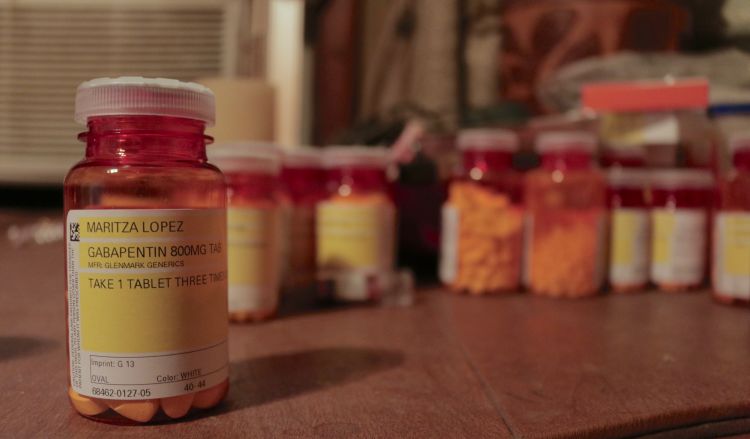
Dozens of pill bottles cover Lopez’s table. She says she takes 27 pills a day to manage her seizures and health problems. (WBEZ/Katherine Nagasawa)
Dozens of pill bottles cover Lopez’s table. She says she takes 27 pills a day to manage her seizures and health problems. (WBEZ/Katherine Nagasawa)
